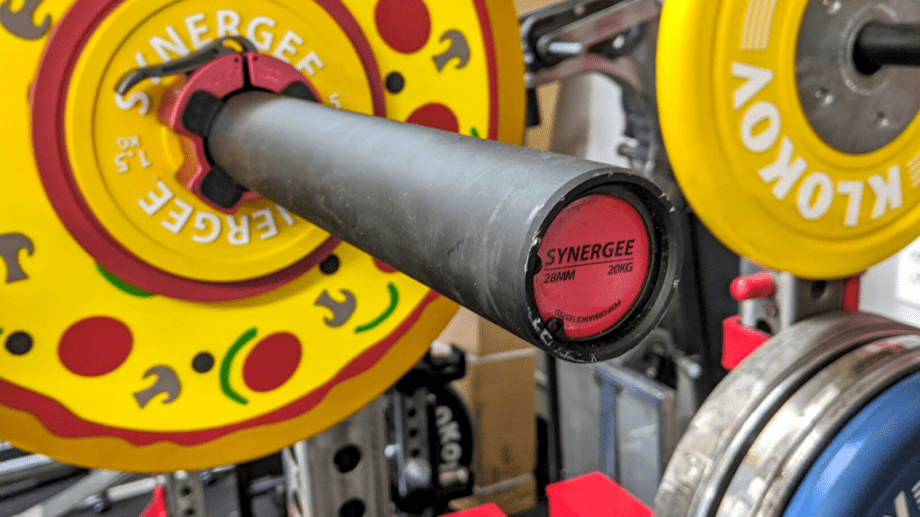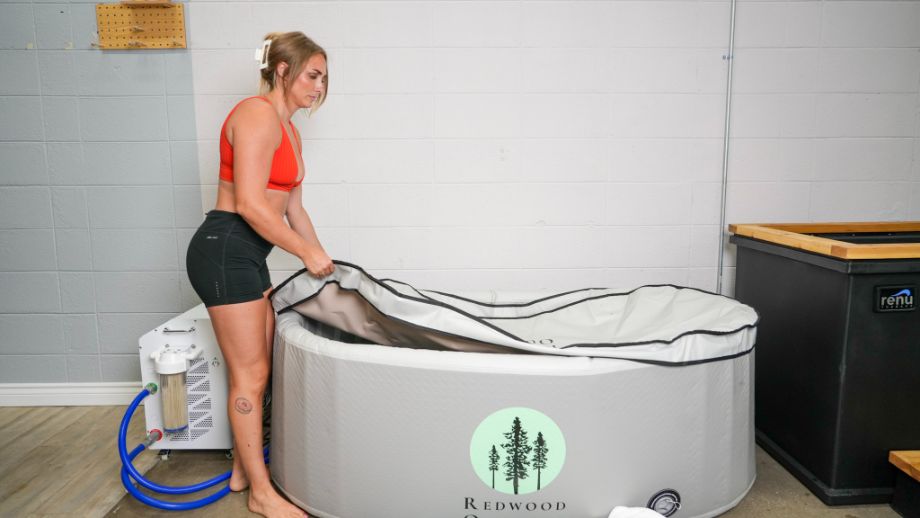Gym-goers and personal trainers everywhere commonly feature exercises like the back squat, hip thrust, and lunge in their regular leg day workout routine, but not everyone is familiar with the Bulgarian split squat. The Bulgarian split squat may sound super intimidating, but it’s pretty approachable once you learn a little bit about the movement pattern and proper form.
RELATED: Lower-Body Workouts
Amanda Capritto, CPT, CES, CNC, CF-L1, CSNC, provides step-by-step instructions on how to do the Bulgarian split squat, including tips for proper form, common mistakes to avoid, and popular variations of this lower body exercise. Read on for more!
How To Do the Bulgarian Split Squat
Bulgarian Split Squat
- Also known as: Split squat
- Targets: Quadriceps, glutes, hamstrings, calves, abdominals, spinal erectors
- Equipment needed: Bench, plyo box, or sturdy chair
- Level: Intermediate
- Stand with your back to a flat weight bench.
- Place one foot on the bench behind you.
- Bend your front leg to slowly descend.
- Continue until your front knee forms a 90-degree angle.
- Pause, then push through the heel of your front foot to return to the starting position.
- Complete the desired number of reps, then switch sides and repeat the set.
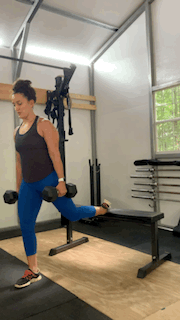
Safety and Precautions
It’s important to perform the Bulgarian split squat with proper form to avoid injury (and maximize its benefits). Most importantly, you need a secure surface to execute this unilateral movement. Choose a weight bench, chair, or other platform that won’t shift or wobble and firmly plant your front foot on the floor to create a stable anchor point.
Another important safety tip is to start with lighter weights or just your body weight until you have mastered the movement and built sufficient strength and stability. Rushing into using heavy weights can increase the risk of injury, especially if you haven’t developed the necessary balance and control.
You also need to pay attention to your knee alignment throughout the movement. Make sure your knee tracks over your ankle to avoid any inward or outward collapse, which could lead to an injury.
Trainer Tips for Form
Performing a split squat with an elevated back leg seems intimidating, but a little know-how and plenty of practice should get you up to speed in no time!
Experiment with Foot Positioning
Proper foot positioning is roughly hip-width apart, but there’s some wiggle room.
“I teach hip-width to my clients, but going a little wider works just as well,” says Amanda Capritto, CPT, CES, CNC, CF-L1. “A little bit wider creates a wider, more stable base. This helps you keep your balance, especially if you pair the Bulgarian split squat with a barbell as you progress.”
RELATED: Best Barbell Exercises
By that same token, going too wide diminishes your ability to generate power and stand back up without moving unnaturally. Start out with feet hip-width apart, but don’t be afraid to play around with the positioning until you feel like you have a solid, strong base in place.
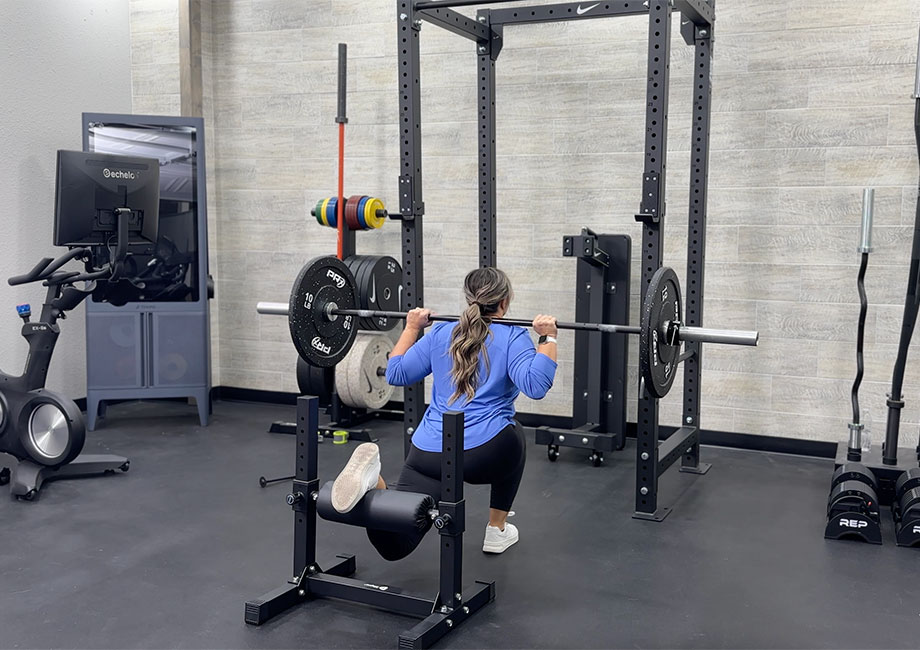
Keep Your Gaze Forward
The Bulgarian split squat mostly targets your lower body muscles, but, as with most squat variations, it’s imperative you keep your back straight, core braced, and neck neutral throughout the movement.
Unfortunately, many of us have a tendency to look down at our feet during exercises like the Bulgarian split squat, which inadvertently causes us to come out of alignment.
“Look wherever you need when getting into position, but before you move, check in with your form, make sure your back is straight, core is braced, and look straight ahead before you start moving,” says Amanda. “Looking forward ensures you don’t put undue stress on the neck or accidentally tilt forward towards the floor, which may also affect your balance.”
Keep Your Chest Up
Keeping your chest up goes hand-in-hand with keeping your eyes fixed forward. Proper alignment is imperative during the Bulgarian split squat, and allowing your chest to tilt forward towards the floor places undue stress on the neck and spine.
That’s not all; letting the chest fall forward also affects your balance and makes it harder to stay strong and stable throughout the range of motion. Balance is paramount for this movement, but it’s extra important once you add weight and have to stabilize a heavy barbell on your shoulders simultaneously.
So, no matter what, keep your torso upright to maintain good posture and balance.
RELATED: Balance Exercises
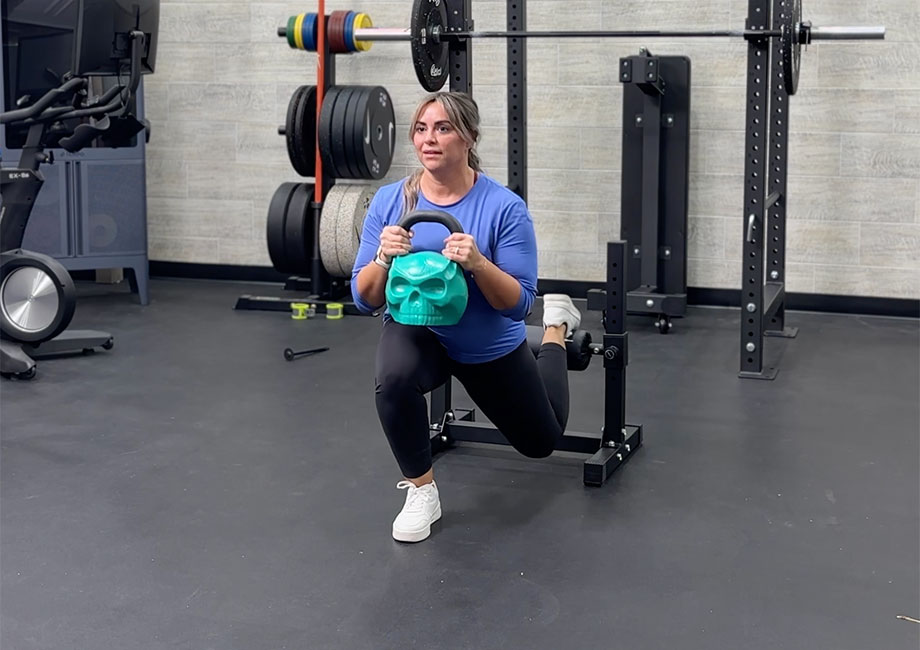
Start Without Weight
You’re pretty proficient with the back squat, so you’ll definitely be able to handle a little resistance when doing Bulgarian split squats, right?
“There’s some carryover from other squat variations to the Bulgarian split squat, but beginners often find the positioning awkward at first,” says Amanda. “For that reason, it’s worth it to do a few sets of Bulgarian split squats without weight to get a feel for it.”
What’s the Difference Between a Split Squat and a Bulgarian Split Squat?
Although they may seem interchangeable based on their names, the split squat and Bulgarian split squat are decidedly different exercises. While they’re both great for building strong, muscular legs, they have distinct differences in execution and muscle engagement.
In a split squat, you take a staggered stance with one foot in front of the other and lower your body by bending both knees until your back knee nearly touches the ground. Then, you return to the starting position by pushing through the front heel. This exercise primarily works the quads, hamstrings, and glutes of your front leg while also engaging the stabilizing muscles of your back leg.
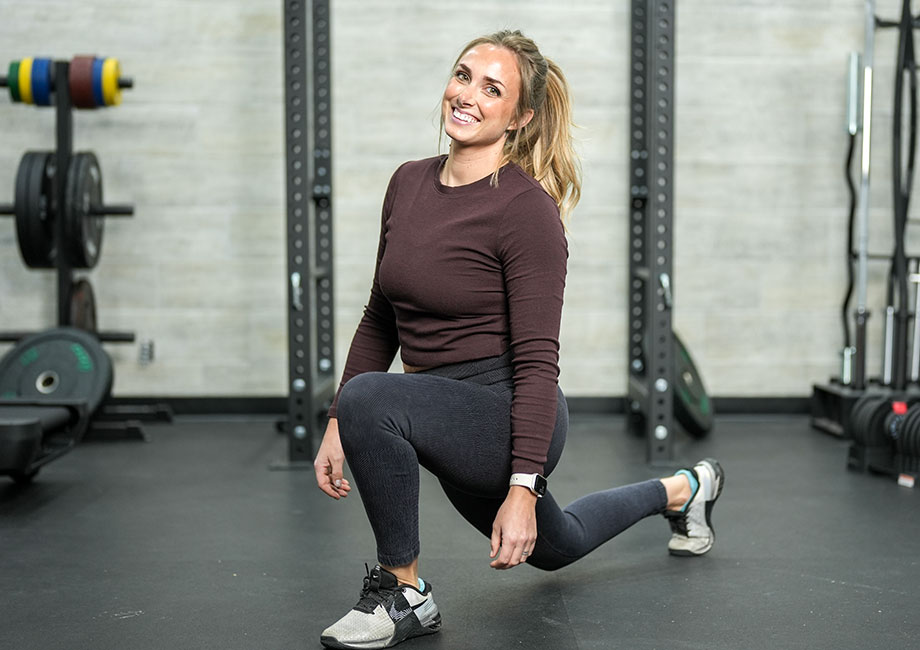
On the other hand, the Bulgarian split squat, also known as the rear-foot elevated split squat, involves placing your back foot on an elevated surface (such as a bench or box) with your front foot planted on the ground. This exercise places greater emphasis on your front leg, particularly your quadriceps. It also engages your glutes, hamstrings, calves, and core muscles to a significant extent.
Additionally, the Bulgarian split squat requires more balance and stability due to the elevated back foot, making it more challenging than the traditional split squat.
Bulgarian Split Squat Variations
With practice, you’ll have the Bulgarian split squat down pat before you know it! Luckily, there are many variations that make the exercise easier if you’re still learning or more challenging if you’re ready to kick things up a notch.
Standard Split Squats
The Bulgarian weightlifting team developed their trademark split squat technique in the mid-to-late 20th century, which is why the movement is called the Bulgarian split squat, but really, the exercise is just a rear foot elevated split squat that offers increased muscle activation and helps build muscle and lower body strength faster than the standard split squat.
If you’re having a hard time with the BSS, the standard split squat is a happy compromise that will help you build leg strength to tackle the Bulgarian version later on.
How to do it:
- Stand with your feet hip-width apart, then take one step back.
- Slowly lower the body into a squat by bending both knees.
- Continue until both knees form right angles and your back knee lightly touches the floor.
- Pause, then push through the heel of your front foot to return to the starting position.
- Complete the desired number of reps, then switch sides and repeat the set.
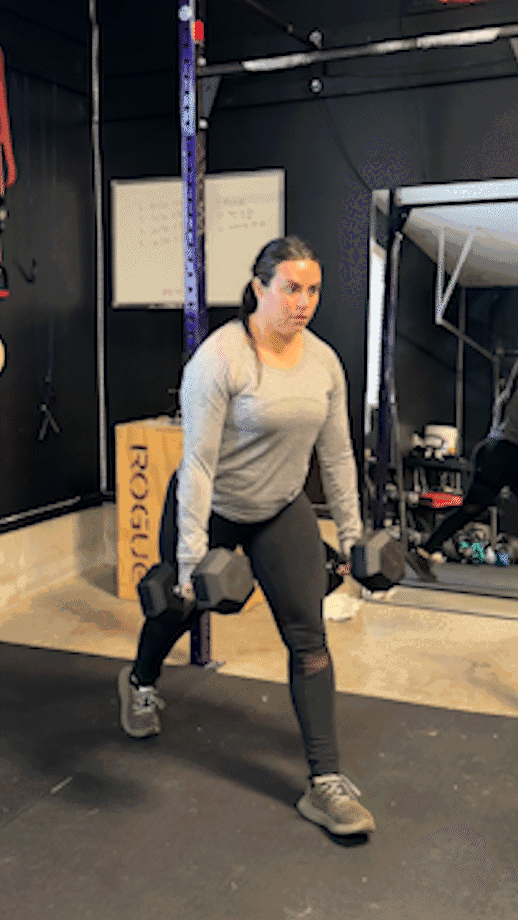
Barbell Bulgarian Split Squat
Scaling down to the standard split squat makes sense for beginners, but what if the bodyweight BSS doesn’t pose enough challenge and you need something with a little more oomph?
The barbell Bulgarian split squat is a great next step. Simply set up your BSS as you normally would, except unrack a loaded barbell onto your upper back and shoulders before you get into position and start squatting.
“Start light when first trying out the barbell Bulgarian split squat,” Amanda Capritto, CPT, CES, CNC, CF-L1 says. “You already need strong core muscles to keep your balance during the bodyweight version, but adding a barbell requires even more stability and composure.”
RELATED: Functional Core Exercises
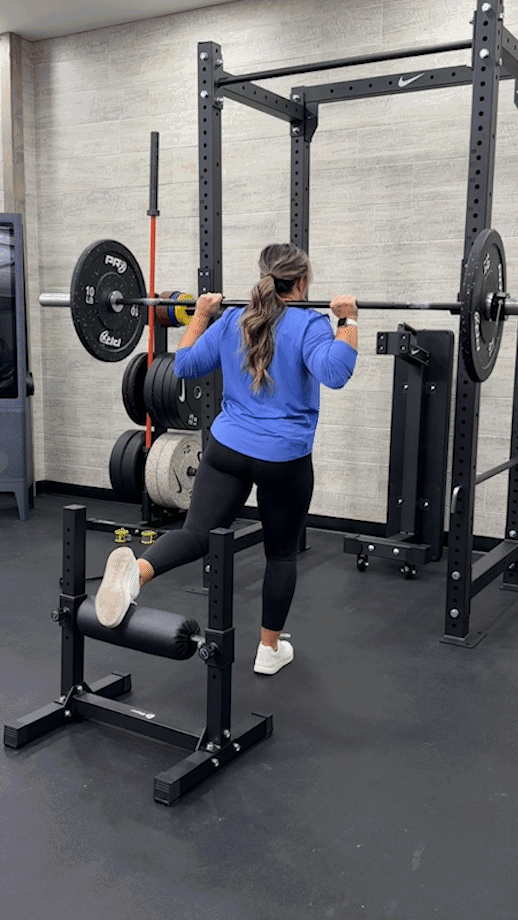
Goblet Bulgarian Split Squat
If racking a barbell onto your shoulders with an elevated back leg scares you, you might feel more comfortable doing a goblet Bulgarian split squat instead. Goblet squats are less often less intimidating for beginners, also providing an alternative method of adding resistance if you’ve had issues with your lower back, knees, wrists, shoulders, or hips.
Plus, holding a kettlebell or dumbbell to your chest during the BSS increases upper-body muscle activation, inspiring additional muscle growth and improved strength for your deltoids, pectoral muscles, biceps, and grip.
RELATED: Best Dumbbells
To perform, select your kettlebell or dumbbell, clutch it to your chest as you get into position, then perform the BSS as per usual while keeping the weight against your chest and your elbows pinned to the body.
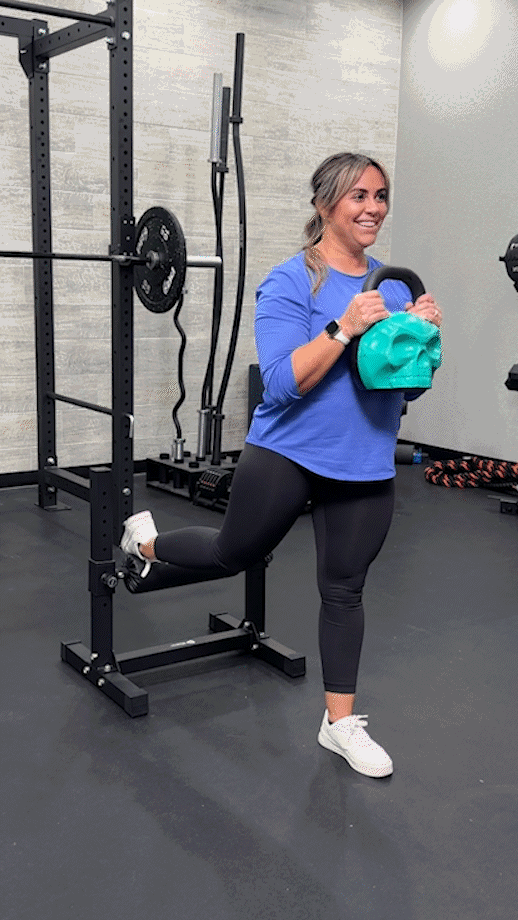
Suitcase Bulgarian Split Squat
Switching your standard split squat or barbell Bulgarian split squat into a suitcase BSS takes some pressure off your shoulders and makes it easier to achieve an upright torso and good posture.
To perform the suitcase BSS, hold a dumbbell or kettlebell in each hand, hold your arms at your sides as though holding two suitcases, and perform the movement as usual.
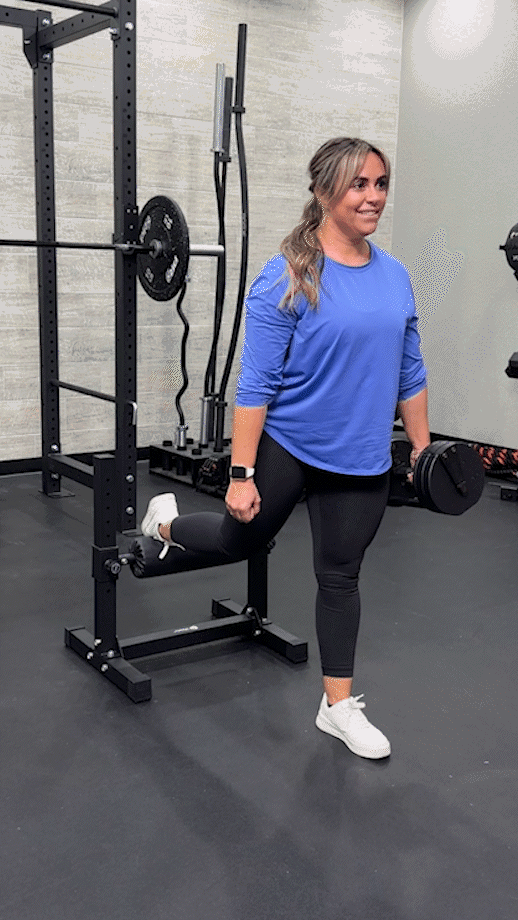
Benefits Of The Bulgarian Split Squat
The Bulgarian split squat is a highly effective compound exercise that offers a range of benefits for strength, stability, and muscle development. A leg day staple, this unilateral movement will put your quads, glutes, hamstrings, calves, and core muscles to the test.
Here are some ways you can benefit from implementing Bulgarian split squats in your training program.
Helps Improve Unilateral Strength and Balance
Since you work each leg independently, the Bulgarian split squat can help correct muscle imbalances. This will enhance your overall lower-body strength, stability, and coordination.
By identifying and addressing any asymmetries or weaknesses via the Bulgarian split squat, you can set yourself up for success on back squats, deadlifts, and other lifts that require a strong, stable base.
Helps Improve Ankle Mobility and Stability
By placing one foot behind you on an elevated surface, you must engage the muscles around your other ankle to maintain balance throughout the movement. This can help strengthen those surrounding muscles and ligaments, leading to superior ankle mobility and stability.
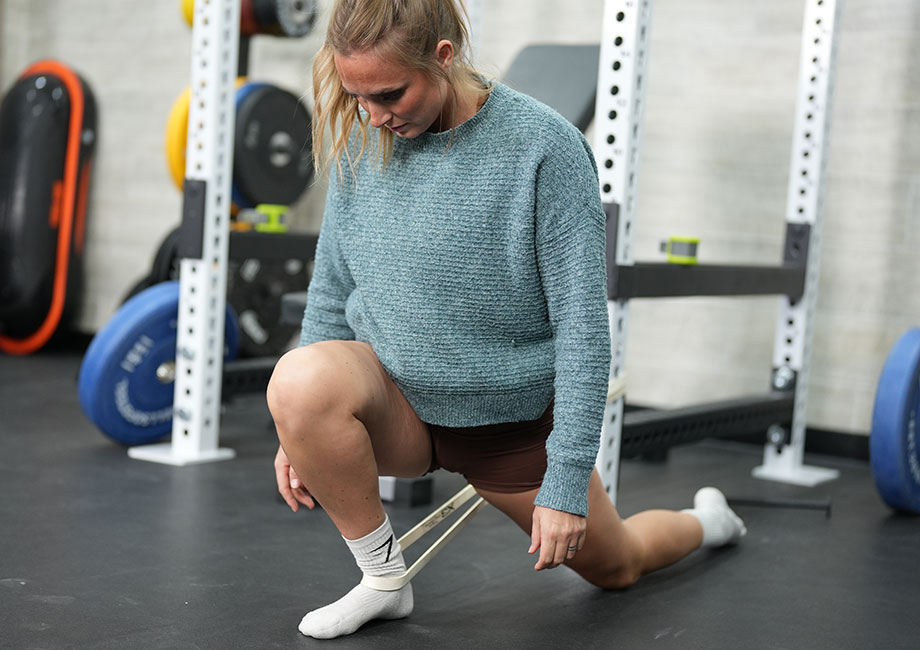
Can Increase Hip Flexibility and Range of Motion
As you perform the exercise, you must lower your body down and back, which stretches your hip flexors and opens up your hip joint. This can be particularly beneficial for individuals who sit for long periods during the day, as this movement pattern helps counteract tightness and stiffness that can develop in the hip flexors. Better hip mobility can lead to better squatting mechanics and lower body function.
Activates Your Core Muscles
The Bulgarian split squat isn’t just a leg-building exercise; it’s also a great way to engage your core muscles and promote better posture. To maintain balance during the movement, you must stabilize your torso and pelvis, which activates your abdominals, obliques, and lower back muscles. Developing better core strength can improve your performance in other lifts and reduce the risk of back pain and injuries.
Common Bulgarian Split Squat Mistakes
Getting a feel for the movement doesn’t make you immune to mistakes, however. Here are the most common Bulgarian split squat mistakes to avoid as you progress.
Chest Falling Forward
As you fatigue, it becomes increasingly difficult to keep your torso upright and core tight, so you might start going into the pain cave and compromising proper spinal alignment.
Fight against this! Not only does letting the chest fall forward place undue stress on your neck and back, but it could negatively impact your balance and ability to generate power as well, leading to lower quality reps.
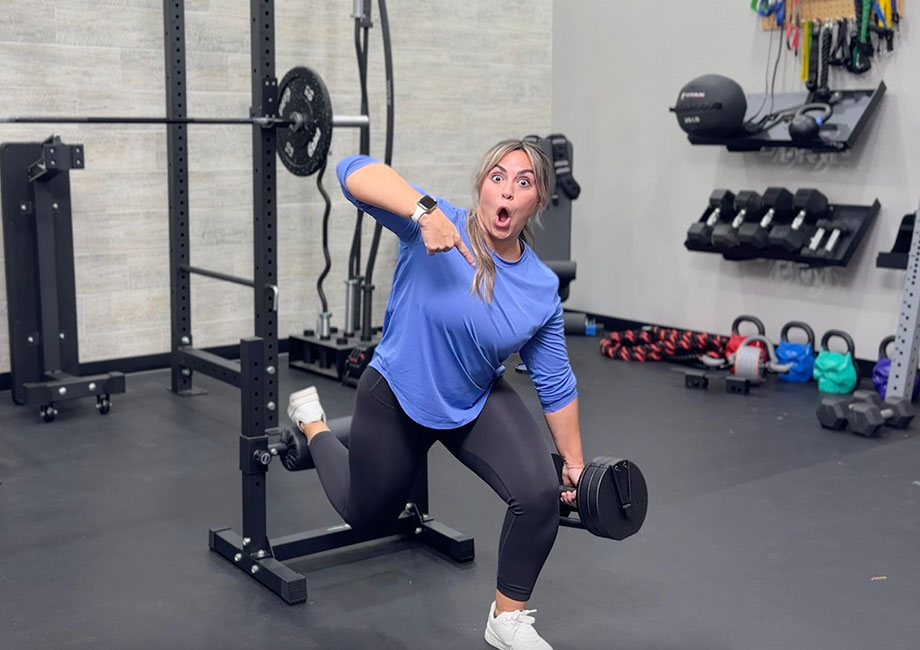
“Keep the chest tall, back straight, core tight, and eyes forward,” says Amanda Capritto, CPT, CES, CNC, CF-L1. “If you start losing the form, stop your set early, rest, and reset so you can do high-quality reps again.”
RELATED: Anti-Rotation Exercises
Foot Out Too Far In Front
The closer your front foot is to the bench, the more activation you’ll receive in the quads. Likewise, the farther your front foot is, the more you’ll feel the brunt of the movement in your hamstrings and glutes.
You don’t want to go too far out front, however, for a number of reasons.
For one, stepping out farther reduces the range of motion, which makes the exercise less effective overall. A far front foot makes maintaining an upright torso more difficult, placing undue stress on your back and contributing to pain and injury over time.
A more immediate concern, however, is that the farther you are from the bench, the more your back foot will be essentially holding on for dear life as you move. The last thing you want mid-squat is for that rear foot to come sliding off the bench and come crashing down, causing you to topple and, at worst, get seriously injured.
Hip Rotation on the Elevated Leg
Proper Bulgarian split squat form requires those hips to stay square and facing forward, but sometimes, we mistakenly lessen the muscle tension by turning our back knee outward and rotating our hips.
“Hip rotation on the rear leg is often caused by muscle tightness,” says Amanda. “The tension gets too intense, so we turn our knee outward to lessen the intensity, compromising our form in the process.”
To avoid this common mistake, warm-up with a few stretches and mobility exercises that specifically target the quadriceps and hip flexors. Once you’re nice and limber, you’ll be more likely to maintain proper form from start to finish.
RELATED: Hip Flexor Exercises
Useful Bulgarian Split Squat Equipment and Accessories
The Bulgarian split squat is one of the best exercises to add to your lower body workout, but you’ll need a few key items if you’re going to perform them in your home gym.
Padded Weight Bench
Without a weight bench to prop up your leg, you won’t be able to convert your standard split squat into a bona fide Bulgarian split squat.
RELATED: Best Weight Bench
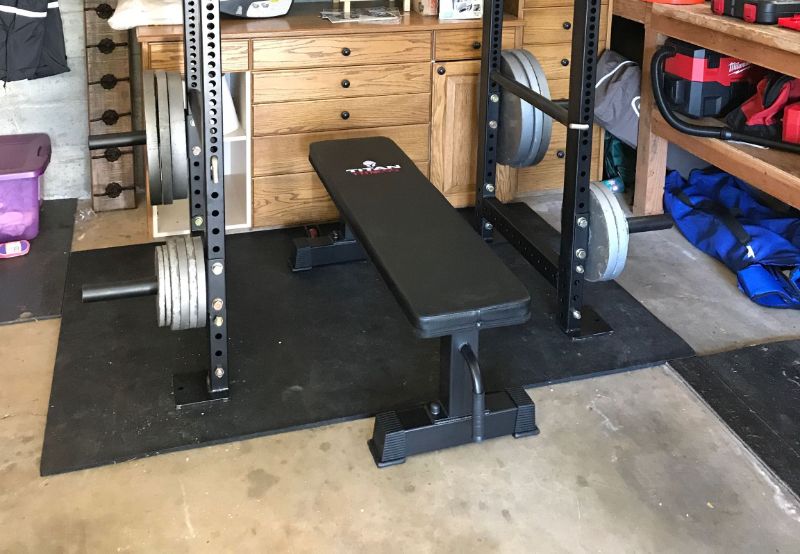
“Weight benches are very useful for Bulgarian split squats,” says Amanda Capritto, CPT, CES, CNC, CF-L1, “but they’re very versatile in general. Every home gym should have one.”
Folded Yoga Mat or Towel
If you don’t have a weight bench, however, and you don’t have the space, budget, or interest in getting one, hope is not lost. You can still get in your BSS reps by propping your back foot onto something else, like a step, plyo box, or other sturdy elevated surface.
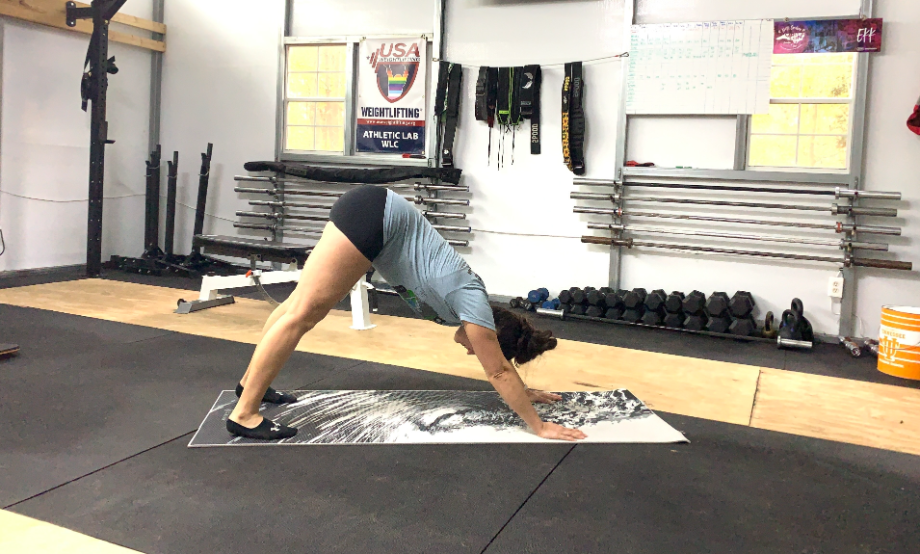
You might consider folding an exercise mat or towel for improved comfort during your reps. The last thing you need when you should be focusing on maintaining proper form is discomfort in your back foot caused by resting it on a hard surface.
Muscles Worked By The Bulgarian Split Squat
The Bulgarian split squat primarily targets your quadriceps—the large muscles on the front of your thigh. Additionally, your glutes, hamstrings, calves, and core muscles play crucial roles. Understanding how each muscle group factors into the movement pattern can help maximize the effectiveness of this challenging exercise.
- Quadriceps: As the primary mover, your quadriceps are responsible for knee extension during the Bulgarian split squat. This exercise targets the rectus femoris, vastus lateralis, and vastus medialis—the teardrop-shaped muscle synonymous with well-developed quads.
- Glutes: While your quadriceps take the lead, your glutes are heavily engaged in stabilizing your hips and providing power during the concentric phase of the movement.
- Hamstrings: Your hamstrings assist in knee flexion and hip extension during the Bulgarian split squat. While they lengthen during the eccentric phase to help control your descent, they contract during the concentric phase to help you return to the starting position.
- Calves: Your calves act as stabilizers to maintain overall balance as you raise and lower yourself.
- Core stabilizers: Your core muscles—including your rectus abdominis, transverse abdominis, obliques, and spinal erectors—help stabilize your torso and pelvis, preventing excessive leaning and ensuring proper alignment throughout the movement.
Bulgarian Split Squat: FAQs
What is Bulgarian split squats good for?
The Bulgarian split squat provides many of the same benefits as the back squat, helping build strong legs and increase lower body muscle hypertrophy.
One of the key distinctions, however, is that the BSS is a single-leg exercise, and because it’s a unilateral exercise, it also enhances balance, improves coordination, corrects muscle imbalances, and addresses bilateral deficits.
What is the difference between a split squat and a Bulgarian split squat?
The split squat is a similar movement, but the main difference is that the split squat is performed exclusively from the floor. The BSS, on the other hand, involves elevating the back leg to increase muscle activation and add a balance challenge.
RELATED: Quad Exercises
Are Bulgarian split squats better than lunges?
It’s tough in fitness to definitively rank one exercise over another, but we’re giving preference to the lunges exercise since it’s an overall more versatile exercise with nearly infinite variations. Plus, the movement mechanics are less complex, making it more approachable and therefore more widely used.
That said, the BSS tends to target the quads and glutes with more intensity, especially if you’re putting a barbell on your shoulders for extra resistance.
Both have their places in a strength training program, but there’s a reason why lunges are significantly more popular.
Why is it called the Bulgarian split squat?
The Bulgarian split squat is named after the Bulgarian Olympic weightlifting team, who popularized the exercise as part of their training regimen in the ‘70s and ‘80s. Former Bulgarian national team assistant coach Angel Spassov claimed their athletes swapped out back squats for this squat variation to build lower-body strength and power.



